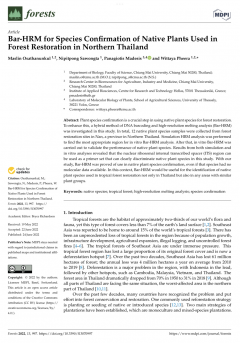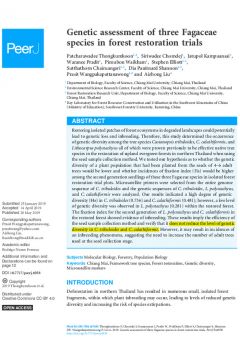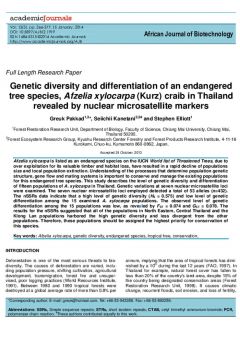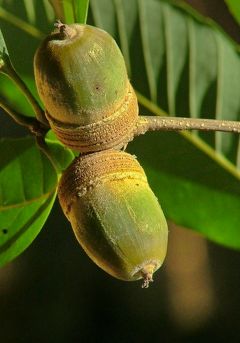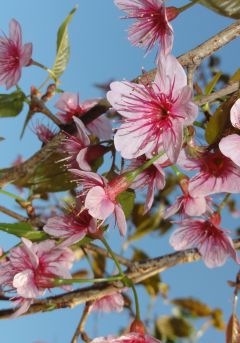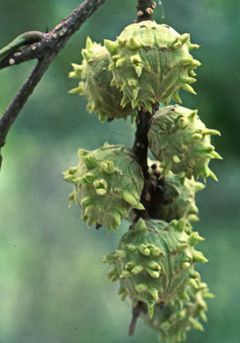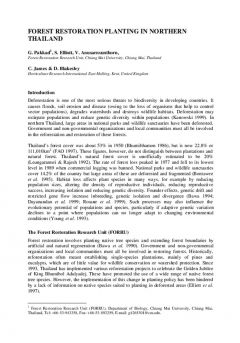Publications
1: Bar-HRM for Species Confirmation of Native Plants Used in Forest Restoration in Northern Thailand
ABSTRACT: Plant species confirmation is a crucial step in using native plant species for forest restoration. To enhance this, a hybrid method of DNA barcoding and high-resolution melting analysis...
2: Genetic assessment of three Fagaceae species in forest restoration trials
ABSTRACT: Restoring isolated patches of forest ecosystems in degraded landscapes could potentially lead to inbreeding, leading to loss of genetic variability among small populations of planted...
3: Genetic diversity and differentiation of an endangered tree species, Afzelia xylocarpa (Kurz) craib in Thailand revealed by nuclear microsatellite markers
ABSTRACT: Afzelia xylocarpa is listed as an endangered species on the IUCN World list of Threatened Trees. Habitat loss and over-exploitation for its valuable timber have resulted in a rapid...
4: Gene flow pattern and mating system in a small population of Quercus semiserrata Roxb. (Fagaceae)
ABSTRACT:- Pollen flow from external sources is important for the conservation of tree species in fragmented forests or small populations, because it prevents differentiation among them and loss...
5: Genetic variation and gene flow among Prunus cerasoides D. Don populations in northern Thailand: analysis of a rehabilitated site and adjacent intact forest
ABSTRACT: This study describes the level of genetic variation and gene flow within and among populations of Prunus cerasoides in rehabilitated sites and adjacent intact forest. Seven...
6: Genetic variation of Prunus cerasoides D. Don, a framework tree species in northern Thailand
Prunus cerasoides D. Don has been identified as an excellent ‘framework tree species’ for restoring evergreen forest in seasonally dry tropical forestlands. Here we describe the level of...
7: Genetic diversity of Castanopsis acuminatissima (Bl.) A. DC. in northern Thailand and the selection of seed trees for forest restoration
ABSTRACT: Castanopsis acuminatissima (Bl.) A. DC. is one of several "framework species", which are being planted to restore seasonally dry tropical forests in northern Thailand. This study...
8: Selecting Superior Parent Trees for Forest Restoration Programs, Maximizing Performance whilst Maintaining Genetic Diversity
ABSTRACT: The framework species method of forest restoration addresses the serious problem of tropical deforestation by planting selected tree species that accelerate the natural processes of...
9: Forest restoration planting in northern Thailand
Deforestation is one of the most serious threats to biodiversity in developing countries. It causes floods, soil erosion and disease (owing to the loss of organisms that help to control vector...
-
- 16: 9
- 13: 2
- 14: 2
- 12: 1
-
- 28: 7
- 19: 1
- 42: 1
-
- 48: 9
- 21: 1

